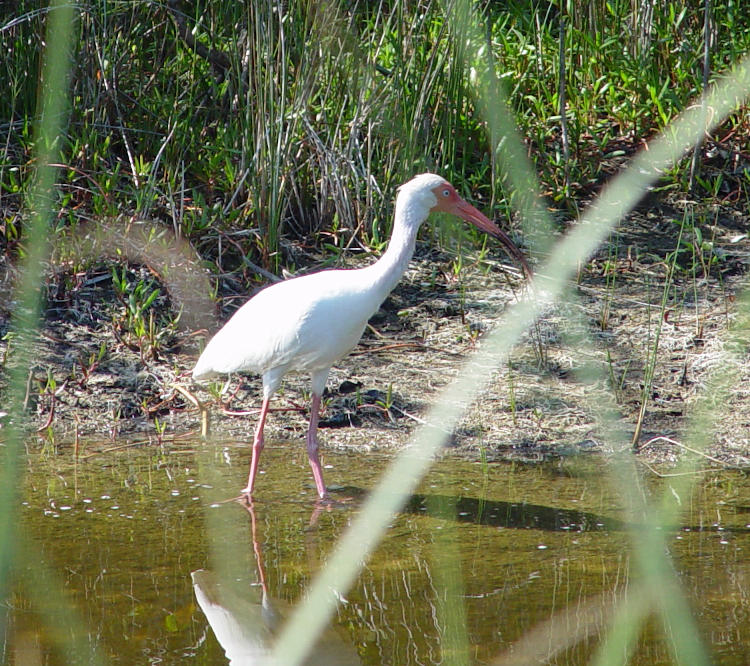
We open today with a fairly common yet distinctive bird around Florida, the American white ibis (Eudocimus albus.) A smallish bird for a wader, perhaps a hair larger than a crow in body size, but smaller than a duck, with the telltale curved red-orange bill and blue eyes – there are also black patches on the wings visible in flight, yet almost entirely hidden when they’re on foot. The curved beak helps them find small crustaceans and shellfish in the wetlands mud. This is also a callback to my brother’s recent visit here, because this was taken while he was visiting me during my tenure in Florida, 18 years ago, and is within Merritt Island National Wildlife Refuge. In fact, it was only seven minutes later than the one below:
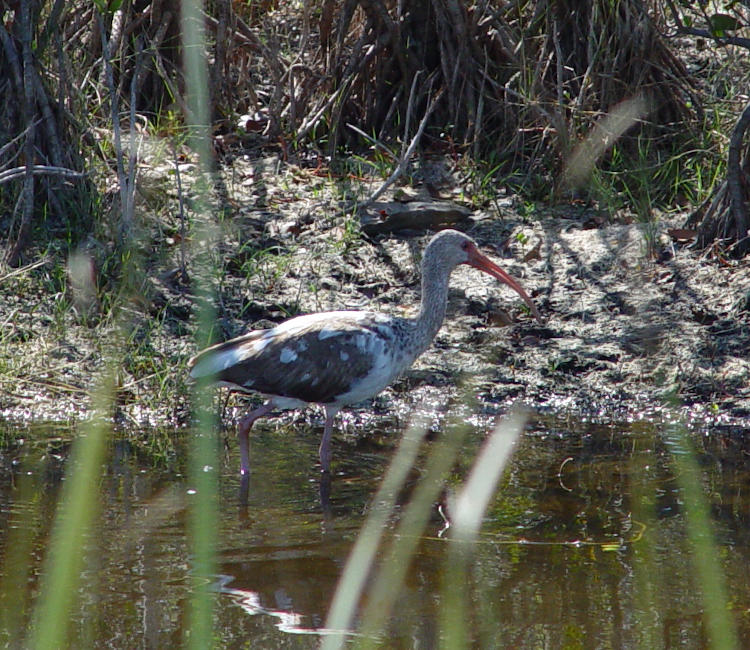
This is what a juvenile of the same species looks like, and the background helps display why: they’re a lot harder to spot while they’re in their vulnerable early months – note also the dark eyes. Color changes like this make perfect sense, optimizing their survival. I would say the white adult plumage helps them with the heat of the subtropics, but then again there are plenty of birds, even further south, that bear dark plumage without issue, so this idea isn’t standing up. But we all know I’m not an ornithologist (or anything else, really.)
And now we get to more theory-wreckers.
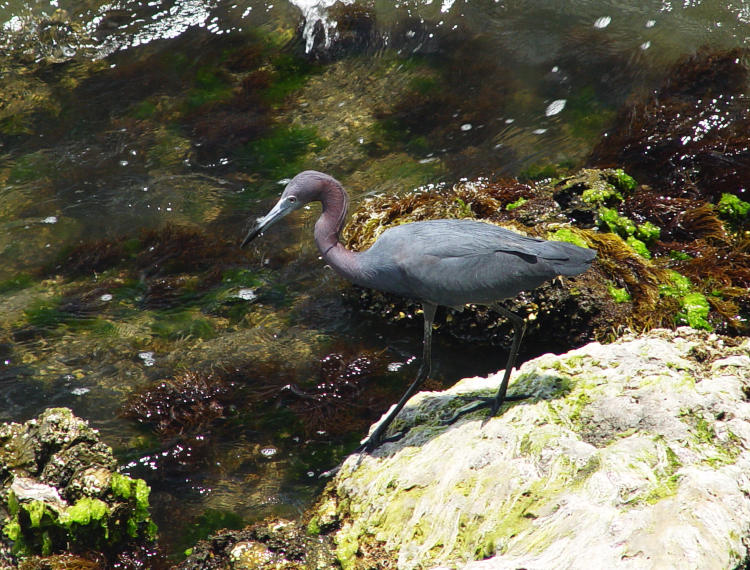
This is an adult little blue heron (Egretta caerulea,) perhaps a shade smaller and leaner than the ibis, but not notably. They’re easy to identify because nothing else in the area looks like this – the tri-colored heron bears some resemblance, but is larger, more mottled, and shows white patches. The little blues tended to be a lot scarcer and shyer than the ibises, and I have far fewer images of them. But then we get to the juveniles.
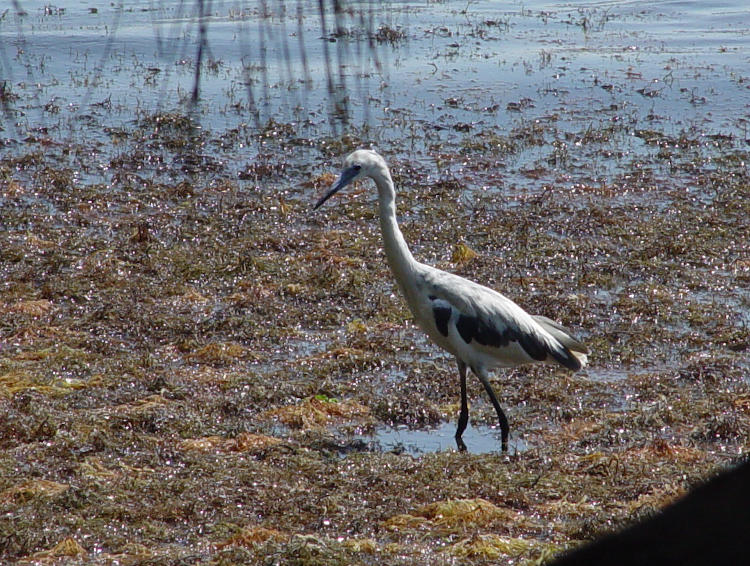
The young little blues are all white, though this one is transitioning into its adult coloration, so it looks like a negative image of those jeans that are cool right now (or am I behind again?) and will be seen as stupid in a decade by kids the same age. However, why the juvies should be high-visibility white while the adults can at least blend into the shadows escapes me entirely. Both the juvenile and the adult were shot on the Indian River Lagoon, though kilometers apart, with the juvie still captured during my brother’s visit, and I think this is the only image I have of one. A key thing to look for here is the bill and eye area, as indigo as the adults, and this differentiates them from…
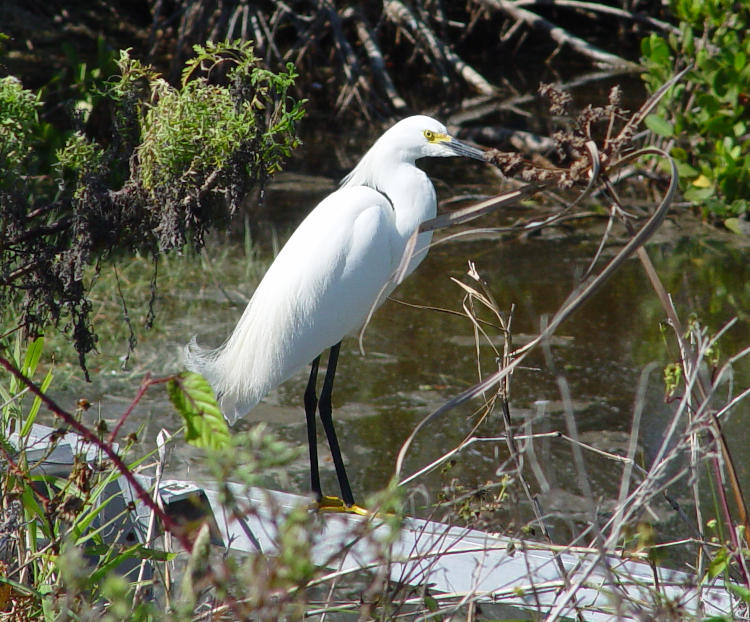
… the adult snowy egret (Egretta thula,) which is the same size and frequents the same habitats, so we look to the bill and eyes to see the difference, though this species also has yellow feet that the little blues lack – they’re under water so often for both species that this isn’t the easiest trait to use for differentiation. Here we can also see the breeding plumes, the shaggy longer feathers on head and back that the juvenile little blues don’t have, but this is a seasonal thing and not present at all times for the species.
We’ve also gone back to Merritt Island and my brother’s visit – this was shot on the same day as the first two. Merritt Island is a pretty damn good place to check out, really, though having my brother in tow is a bit harder to arrange…




















































